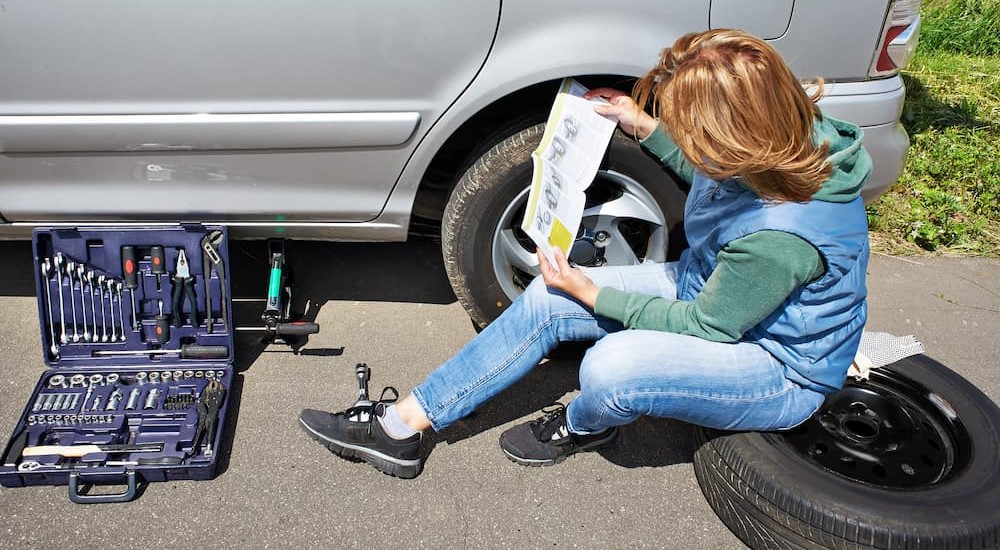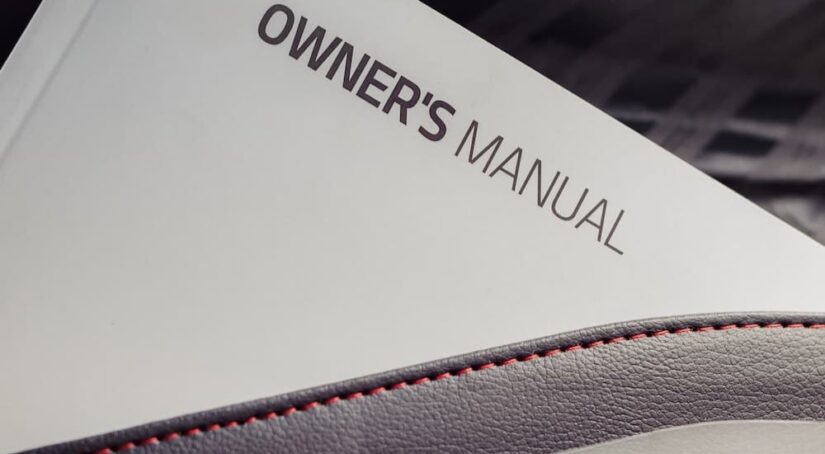If you’re like me and keep all the important documents in your glove compartment, chances are your owner’s manual is buried somewhere inside. Should you crack it open and take a look at what it contains? There must be something important to warrant its thick appearance.
I come from the generation that used to read the back of the cereal box during breakfast, so it’s nothing to crack this baby open while I’m stuck in traffic. It turns out that there really is a lot of helpful information inside, and the more educated you are in navigating it, the more familiar you’ll become with your vehicle. Should you read your car’s owner’s manual? Experts say yes. Here’s why.
What’s Included in the Owner’s Manual?
There’s a lot to take in when you first open up your owner’s manual, so it’s no surprise that many drivers feel overwhelmed. The reason why there’s so much information is because there are many components in your vehicle. It takes a lot to be able to whisk you to all your destinations, and although it may seem as simple as engaging the ignition and stepping on the gas pedal, there’s more going on behind the scenes than you may ever know. Inside your owner’s manual, you’ll learn about all the different parts of your vehicle and how to maintain them properly. The vehicle’s maintenance schedule and recommended service intervals allow you to keep up with service and keep your vehicle operating at its best.
You’ll also find detailed instructions on completing basic car care tasks, including replacing your wiper blades, locating the various fluids that help your vehicle operate, and maintaining your tires. You can learn how to change your oil and filter, how to check your battery, and many more regular maintenance needs. Of course, the everyday driver will typically utilize a service center for the more advanced tasks. However, the owner’s manual contains even simple tasks, like how to set your radio, operate your lighting elements, and work your seats.
The owner’s manual also comes in handy when you’re in a tricky situation, offering expert guidance on changing a flat tire, jump-starting your battery, and what the various warning lights on your dashboard mean. You can learn about what gas grade your vehicle takes, the ideal pressure for your tires, and even light bulb ratings for the various lights in your car. There’s also warranty information, so you know what’s covered and for how long. This way, you’ll know that if something is amiss, your warranty may still cover it. As you can see, a lot is contained inside that little book, and the more you think about it, the more you wonder how they made it as small as they did, at least if your vehicle still has a physical book. New vehicles tend to come with digital versions.

How to Navigate Your Owner’s Manual
Now that you know how much is included in your car’s owner’s manual, how do you even start finding what you need? Fortunately, these manuals are well organized and make it easy to locate what you need to know almost immediately, especially if you know how to navigate it properly. Various sections provide you with information pertaining to that particular section. For instance, there is typically a section for maintenance and instructions on completing various maintenance tasks, like oil changes, fluid checks, etc. There is even a section for when things go awry on the road and how to fix them.
Technical information will be in its dedicated spot, including tire sizes, trailer weight ratings, fluid types, and more. This may be reserved for those with more knowledge of vehicles, but with just a quick flip of a page, you can figure out how much weight your vehicle can tow or what type of gas it takes. You may also be able to see the exact service schedule for your vehicle. It’s important to note that service intervals vary greatly depending on your driving habits, so use this information as a starting point and speak with a respected service technician to create your own unique maintenance schedule.
Knowing what section the information you’re looking for resides in can save you a lot of time during your search. Luckily, there’s usually a glossary to help you find keywords that you’re looking for and the part of the manual where that component is located. For most, this is enough to navigate their way through. However, it always helps to know about the various sections to help you find what you need faster.
Benefits of Reading Your Owner’s Manual
You may think that you’ll just cross that bridge when you come to it, or in other words, crack open the owner’s manual when needed. However, it helps to familiarize yourself with it before you really need it. Not only will it save you the stress of figuring out where to find what you’re looking for, but it will also save time. You’ll also get to learn how to operate all of the various features found in your vehicle. Maybe you didn’t even know about some of your vehicle’s features until you read your owner’s manual. After just a quick perusal, you may find some key nuggets of information that may be super helpful as you travel.
In reading your owner’s manual, you’ll learn how to operate all of your vehicle’s features and functions, learn all about its various warning lights, and take advantage of some handy tricks for maximizing your vehicle’s performance and longevity. You may even learn some of the best ways to clean the multitude of components in your vehicle to keep your car as comfortable as possible. From knowing where your spare tire is to how to pop open your fuel door, the owner’s manual has it all, providing you with a comprehensive guide to how your vehicle works. If you want to become more knowledgeable about your car and utilize all its features properly, it’s worth taking a moment to skim through your owner’s manual.

Becoming More Knowledgeable Through Your Owner’s Manual
If you want to know about your car’s ins and outs, take a peek inside your owner’s manual. You won’t just become more knowledgeable but also more prepared should something occur as you make your way around town. You may have never thought that you’d be able to change a flat on the side of the road, but your owner’s manual can help you through it. It can also help you change your oil if you’d rather do this at home. Your owner’s manual can save you time, money, and stress. More drivers should take a moment to give this book a look.
The next time you’re waiting in that long line at the Chick-fil-A drive-thru, pop open the glovebox or download the PDF from the manufacturer on your phone if your car is new and doesn’t have a physical book. Look through and see what gems reside in this piece of literature. I’m pretty sure you’ll find something out about your car that you never knew before that may help you improve your time behind the wheel.



